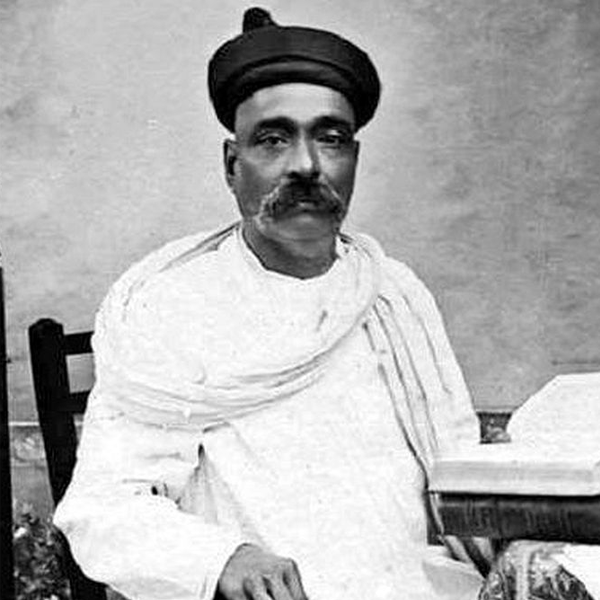Tilak High School, located in Lautoka, Fiji, was initially founded in February 1955 and named after Lokmanya Bal Gangadhar Tilak , Lokmanya Bal Gangadhar Tilak (1856–1920) a revered Indian nationalist, freedom fighter, social reformer, and educator. Tilak played a pivotal role in India’s struggle for independence from British rule and was among the first leaders to advocate Swaraj (self-rule) as the ultimate goal for India. A strong proponent of education and cultural revival, Tilak encouraged Hindu renaissance and the reorganization of traditional festivals like Ganesh Chaturthi and Shivaji Jayanti to unite people against colonial rule. His unwavering resistance to British rule led to multiple imprisonments, including a six-year exile in Burma (Myanmar). His ideas and leadership laid the groundwork for future leaders like Mahatma Gandhi, who later led India to independence. Honoured with the title “Lokmanya” (Beloved Leader of the People), Tilak’s legacycontinues to inspire generations worldwide. Tilak High School was established by pioneers in Fiji with the vision of providing quality education to students in Lautoka and surrounding areas. .
Lockmanya Bal Gangadhar Tilak
The Father Of Tilak High School
" Life is all about a card game. Select the right card is not in our hand
But playing well with the cards in hand determines our Success. "

Over the years, it has earned a strong reputation for academic excellence, discipline, and community involvement. Offering a diverse range of subjects and extracurricular activities, the school fosters the holistic development of students. Today, it remains one of Fiji’s leading secondary schools, producing exceptional graduates who contribute significantly to various fields locally and internationally .
Contribution of
Bal Gangadhar Tilak
Igniting Patriotism: Ruthless suppression of the revolt of 1857 by the British and its aftermath, had created disillusionment and darkness regarding self-rule, that continued for many decades.
Switching to Extremism Phase: The founding of the Indian National Congress (INC) in 1885 was aided by the British, under the narrative of safety-value theory. As a followup to that, the voice of INC was weak and subdued. Early leadership of INC was mainly focused on 3Ps: Prayer, Petition and Protest.
Trisutri Program: Tilak gave trisutri or three-point programme for national awakening – Swaraj, Swadeshi and Nationalist Education based on vernacular. This helped the realisation of self-pride and activism in a nation that was culturally suppressed by the British under the narrative of Whiteman’s burden. For the cultivation of an enlightened mind, he used the media in the form of two newspapers, Kesari and Maratha, and national education through Deccan Education Society, an institute he established.
Swadeshi Movement: Tilak started the Swadeshi movement (1905), which was not just about boycotting British goods, but his larger objective was promoting indigenous entrepreneurship. Tilak wanted to promote manufacturing in India. To that end, Tilak started collecting funds for a corpus, known as Paisa Fund. This can be termed as reminiscent of the Make in India Program, in present times.
Broader Vision of Swaraj: For him, Swaraj or Home Rule meant the rule of, and the rule for, the common people of India. However, he also had a blueprint of an independent India in mind. For him, swaraj was also linked to swa-bhasha and swa-bhusha, i.e. mother tongue and indigenous attire. Perhaps, he was the first national leader who envisioned the formation of linguistic states.
Laying Foundation for Gandhian way of Mass Movement: Tilak’s two arrests by the British in (1897 and 1908) galvanised workers, peasants, professionals and youth in an unprecedented manner. His formula for preparing the ground for political activism through culture, education and media was so powerful that later on Mahatma Gandhi, Babasaheb Ambedkar and others adopted this path. Also, he prepared a fertile ground for swaraj through his home-rule movement.
Cultural Revival: Tilak’s campaign against the British colonial rule was also anchored on reclaiming Indian heritage and culture. In 1896, he famously initiated the ‘sarvajanik Ganesh visarjan utsav’ in Bombay, in which the masses of people came out to worship and then immerse idols of Ganesha in the sea. This religious drive served the political purpose of mass mobilisation. Though it is seen as a communal move by many historians, his writings reflected that his call for public celebration of these festivals was not meant to rouse sentiments against any other community. Its sole purpose was cultural self-assertion of his people then living the yoke of foreign rule.
